Protein-protein and protein-peptide interactions are key interactions for regulatory processes or signal transmission in biological environments. They are involved in cellular uptake, signal transduction, degradation processes, gene expression, cellular motility, immune responses such as antigen-antibody interactions or recognition by immune cells, blood coagulation cascade, viral entry into the cell and many more. As protein-peptide interactions are related to a whole plethora of diseases, they are of particular interest in medicinal chemistry. Our research focusses on the analysis of these interactions by using synthetic small molecules, peptides or peptidomimetics as tailor-made drugs or molecular probes.
Previous and Current Research
Peptides as Drugs
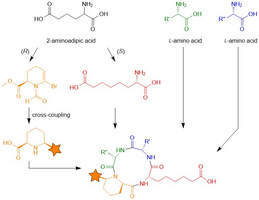
Protein-peptide interactions are essential for every living organism and hence are often related to many diseases. Consequently, these interactions can be systematically addressed to develop potential inhibitors. In order to use peptides as drugs, various modifications can be conducted to increase their bioactivity and stability and to synthesise tailor-made inhibitors, e. g. for tumour treatment. [more]
Peptide Modification
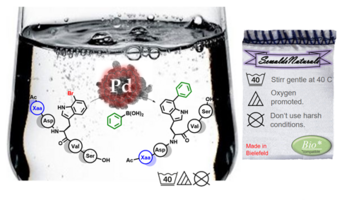
Halogenated compounds are important building blocks for metal-catalyzed cross-coupling reactions, e.g. Suzuki-Miyaura cross-coupling (SMC), which gives access to biaryl motifs suitable for peptide cyclization & modification. [more]
Peptidomimetics
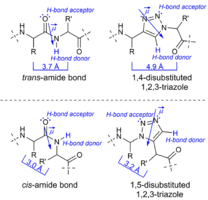
Peptidomimetics retain the ability of their natural peptide counterparts to interact with biological targets while showing improved stability profiles and pharmacokinetic properties. [more]
Tumour Targeting
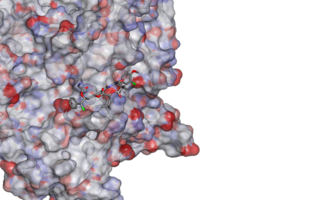
Cryptophycins are naturally occurring cytotoxins with great potential for chemotherapy. Since targeted therapy provides new perspectives for treatment of cancer, new potent analogues of cytotoxic agents containing functional groups for conjugation to homing devices are required. [more]
Enzymatic Halogenation
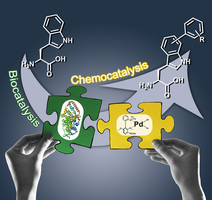
Despite its importance for synthetic chemistry, selective introduction of halogens using conventional approaches often remains challenging, whereas biocatalysis offers excellent catalyst-controlled selectivity without requiring protecting groups. Hence halogenating enzymes increasingly attract attention for biocatalytic C-H functionalization. [more]
Functional Proteomics
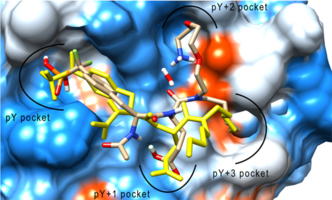
Systematic analysis of the proteins expressed by a cell at a certain time and under certain condition with designed molecules (Functional Proteomics) is of eminent importance. Moreover, Chemical Genomics is a powerful strategy to evaluate the influence of synthetic small molecules (e.g. drug candidates) on biological systems.
Either an enrichment step or selective tagging with reporter groups (e.g. fluorescent labels, radioactive tags, or biotin) can be utilized for the generation of proteome subsets. As separation of protein mixtures by 2D-PAGE usually involves denaturing conditions, only such protein families could until now be tagged where irreversibly binding ligands (suicide inhibitors) were known. Irreversibly binding ligands are not available for the vast majority of proteins. We developed novel engineered chemical probes for the creation of proteome subsets of such protein families, comprising a (semi-)specific, reversibly binding protein ligand (inhibitor) linked to a reporter group and a reactive group (photoaffinity label). Small-molecule kinase inhibitors, metalloprotease inhibitors, sulfatase inhibitors, and integrin ligands, respectively, have been chemically modified to allow for family-wise
- protein enrichment using magnetic beads or affinity chromatography
- covalent tagging with a fluorophor or biotin using photoaffinity labelling.
Future Projects and Aims
The current projects aim at the development of novel molecular tools tailored to the elucidation of biochemical relationships. In the focus of the investigations are protein-protein and protein-drug interactions. The novel tools will not only be suitable for the detection of binding partners and protein classes in eukaryotic systems, but also in the evaluation of interactions in prokaryotes, including complex microbial systems. Peptide-based drugs offer a great potential for the application as therapeutics due to their high selectivity, e.g. as natural hormones.




